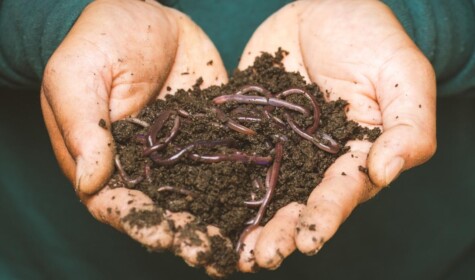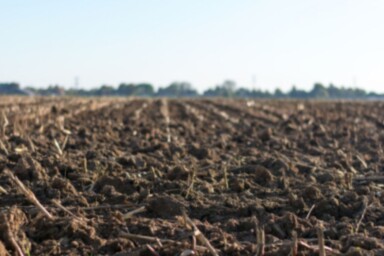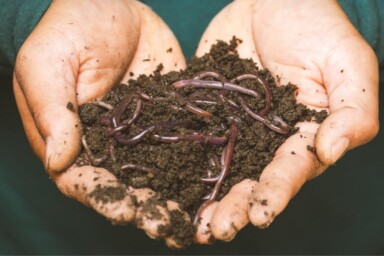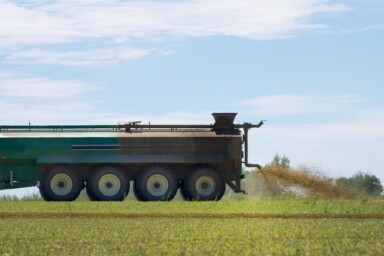Along with air to breath and water to drink, soil is one of our most important natural resources. Without it we would starve. However, due to poor farming practices, we are using soil at a completely unsustainable rate. The United Nation’s General Assembly has designated 2015, the International Year of Soils, to raise awareness of the urgent need to switch to sustainable soil management. If we do not make major changes to farming methods, food production will decline in future, instead of rising to meet the needs of a growing population.
Most current food production methods do not nurture the soil. Instead they exploit it, as if it were an infinite resource. As a result, 24 billion tonnes of soil is washed or blown away every year. That’s equivalent to 3.4 tonnes for every adult and child on the planet, every year. As well as being eroded, soil is also being degraded – losing its organic matter and structure – a process which ultimately turns 30 million acres of food producing land into desert every year.
Soil isn’t just important because it is the source of our food, it also plays a vital role in regulating the climate, providing clean drinking water and supporting plant and animal biodiversity.
The situation will only improve if we all understand what is going wrong and why, and what needs to change. There are many inspiring examples from around the globe of farmers who care for their soil, as well as examples of how once degraded land and even desert, is now producing food and sustaining local communities again. However, there are many more examples of abused soils in serious decline.
In this International Year of Soils, the Sustainable Food Trust will be returning to soil many times. We start with an introduction to this extraordinary and life-giving natural resource.
- Over 95% of our food comes from the soil. The quality of soil influences the quality of food, especially in relation to the content of important trace elements, such as selenium and zinc, and arguably also in relation to taste.
- A spoonful of healthy soil can contain more living organisms than there are people on the planet. The more fertile the soil is, the more organisms it has living in it. These organisms include bacteria and fungi, as well as larger soil creatures like nematodes, earthworms and ants. All are important for the health of soil.
- Soil is a mixture of minerals from rocks (45%), organic matter derived from decaying plant and animal material, plus the tiny living creatures in the soil (5%) – along with air (25%) and water (25%). It takes approximately 500 years for 1 inch of soil to form.
- Soils still contain more carbon than the atmosphere and all the world’s forests combined. Soil is one of our key defences against climate change because of this. The healthier the soil, the more carbon it holds.
- Soil organic matter is about 50% carbon. Humus is dark, stable, organic matter in healthy soils. Each gram of humus can hold twenty times its own weight of water, allowing soils with high organic matter to act as a sponge to soak up heavy rain and continue to provide moisture for crops during dry conditions.
- To increase humus levels by adding organic matter, it is vital to compost it first in an aerobic way to introduce oxygen before adding it to the soil.
- Most cropland globally has lost 30-40% of its organic matter. Well managed grassland that is not overgrazed generally rebuilds organic matter.
- Professor John Crawford of Rothamsted Research has pointed out that, at the current rate of degradation, we only have enough soil left globally to provide food for another 60 years. Soil degradation in countries with temperate climates is less severe than in some parts of the world, but researchers at Sheffield University claim that even in the UK we only have enough soil left for another 100 harvests at current rates of decline.
- Grapes of Wrath by John Steinbeck tells the story of families that had to leave their land and become migrant workers due to soil erosion in the 1930s. The severe soil degradation in the ‘Dust Bowl’ was caused by unsustainable farming practices which replaced native deep-rooting long grasses with continuous cropping of mostly wheat and led to three million people leaving farms in the praires of North America and Canada.
- History shows that civilisations, like the Summerian society in Mesopotamia (the world’s first literate culture) which flourished from 3,000 BC, came to an end because of over-cropping and over-irrigation of their soils. Irrigation in hot countries is a major cause of salinisation – the build up of salts in topsoil, because evaporation prevents minerals being taken down to plant roots. As US President, Franklin D. Roosevelt said: “A nation that destroys its soil destroys itself”.







